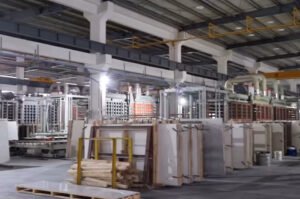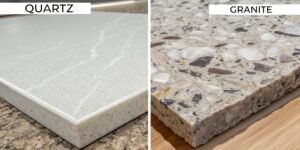Are you confused about how quartz is really made? This uncertainty can make it hard to choose the right supplier. Let me explain the high-tech process behind these beautiful surfaces.
Quartz countertops are engineered surfaces. About 90-93% crushed natural quartz is mixed with polymer resins1 and pigments. This mixture is then pressed under immense pressure, cured in a kiln, and polished. This process creates a durable, non-porous slab with consistent quality and appearance.

That's a question I love to answer. For me, it is not just a manufacturing process. It is a form of high-tech alchemy, turning raw minerals into a beautiful, functional surface. To really understand it, you need to see how it comes together. It is a story of raw materials, advanced technology, and extreme pressure. The final product looks simple, but the journey it takes is quite complex. This process is what separates a high-quality slab from one that will fail in a few years. Let's look at the details.
How are quartz worktops made step by step?
You might know the ingredients, but not the actual process. Without knowing the steps, you can't spot potential quality issues. Let me walk you through our factory's step-by-step production line.
The process starts with mixing raw quartz, resins, and pigments. The mixture is poured into a mold and subjected to vibro-compression2. It is then cured in a kiln, cooled, and polished to a high gloss. Finally, a strict quality control check ensures every slab is perfect.
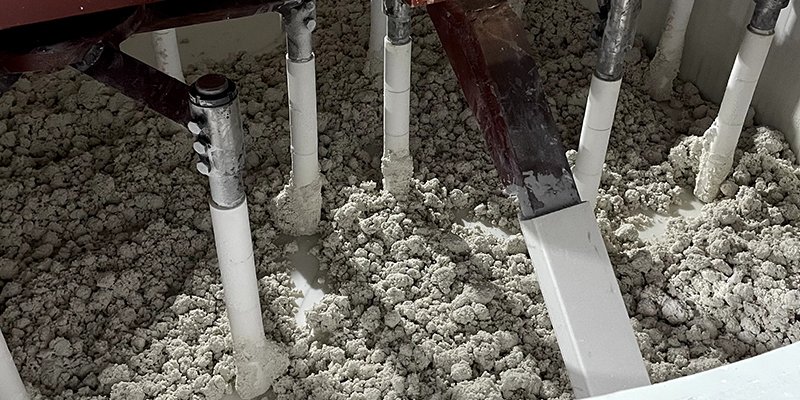
The entire process is a symphony of precision engineering. I think of it in five distinct stages, each one critical to the final quality of the slab.
Step 1: Mixing and Blending
First, we start with the recipe. We combine the main ingredients: about 90-93% crushed natural quartz, 7-10% high-quality polymer resin, and small amounts of pigments for color. These are loaded into huge industrial mixers3. A computer controls the formula to ensure every batch is identical for a specific design. Everything is mixed until it becomes a thick, damp paste.
Step 2: Pressing and Forming
This is the most important stage. The mixture is poured into a large slab-sized mold. Then, it goes into a massive machine for what we call "vibro-compression2 under vacuum." This machine applies over 100 tons of pressure while vibrating the mixture and pulling all the air out. This forces the quartz particles into an incredibly dense slab, leaving no air pockets.
A few years ago, a client in South America tried a cheaper supplier. Six months later, their countertops were staining from coffee and wine. The problem was here. The cheaper factory used a low-quality press with less pressure. This created tiny, microscopic holes where stains could settle, making the slabs weak. We had to replace their failed countertops. That client learned that the real cost is often hidden inside the slab.
Step 3: Curing
Once pressed, the slab moves into a large curing kiln. It is heated to around 90-100 degrees Celsius for about 45 minutes. This heat activates the resin, causing it to harden and permanently bond the quartz particles together.
Step 4 & 5: Finishing and Quality Control
After cooling, the slab is sent to the polishing line. A series of machines with diamond abrasive pads grind the surface to a precise thickness and create a mirror-like polish. Finally, our quality control team inspects every slab under bright lights for any imperfections. Only perfect "A-grade" slabs are approved for shipping.
What is the binder in quartz countertops?
Are you wondering what holds a quartz slab together? Using the wrong binder can lead to a weak, stain-prone countertop. The secret is a high-quality polymer resin, which is a critical component.
The binder in quartz countertops is a polymer resin, typically a type of polyester. This makes up about 7-10% of the slab's composition. It acts as the glue that holds the quartz crystals together, providing durability, flexibility, and non-porous properties to the final product.
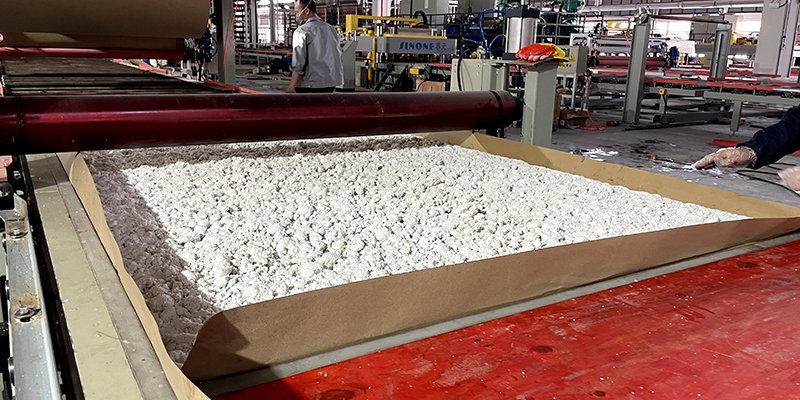
The binder is more than just glue; it’s the backbone of the entire slab. While it only makes up a small percentage of the total weight, its quality has a huge impact on the countertop's performance. The resin is what makes the surface non-porous, meaning it does not absorb liquids. This is why quartz is so resistant to stains from things like wine, coffee, and oil. The resin also gives the slab some flexibility, which helps it resist chipping and cracking from impacts.
Using a high-quality resin is essential. Cheaper, lower-grade resins can have serious problems. For instance, they may not have good UV stability. This means that if the countertop is exposed to direct sunlight over time, the resin can begin to yellow, changing the color of the slab. This is especially noticeable in white or light-colored designs. Top-tier resins, like the ones we use, contain UV stabilizers to prevent this. High-quality resin ensures the slab is durable and maintains its color and finish for many years. It is an unseen but vital part of the countertop.
What is the downside to quartz countertops?
Do you think quartz countertops are perfect? Believing they have no downsides can lead to costly mistakes. Let's be honest about the few limitations of quartz so you can make an informed choice.
The main downsides of quartz are lower heat resistance compared to granite; it can be damaged by direct contact with very hot pans. It is also not suitable for outdoor use, as UV exposure can cause fading. Lastly, high-quality quartz can be more expensive than some other materials.

As a manufacturer, I believe in being transparent about my product's limitations. While quartz is an amazing material, it's not indestructible. Knowing its weaknesses helps you use it correctly.
Here are the main points to consider:
- Heat Sensitivity: The resin binder can be damaged by sudden and extreme temperature changes, known as thermal shock. Placing a hot pan directly from the stove onto the quartz surface can cause discoloration or even cracking. I always tell my clients to use trivets or hot pads as a precaution.
- Not for Outdoor Use: The resins that bind the quartz are not completely UV-stable, even with high-quality additives. Prolonged, direct exposure to sunlight can cause the colors to fade or the resin to turn yellow over time. For this reason, quartz is recommended for indoor applications only.
- Seams Can Be Visible: For very large kitchen islands or long countertops, you may need more than one slab. While a good fabricator can make seams very tight, they will still be visible, especially on solid colors. Patterns with veins can help hide seams better.
Understanding these points helps ensure the longevity and beauty of your quartz countertops.
Is quartz better than granite?
Are you stuck choosing between quartz and granite? Making the wrong choice can affect project budgets and client satisfaction. Let's compare them directly to see which one fits your needs best.
Neither is definitively "better"; it depends on your needs. Quartz offers superior consistency and is non-porous and stain-resistant without sealing. Granite has higher heat resistance but requires regular sealing to prevent stains. Your choice depends on aesthetic preference and maintenance tolerance.
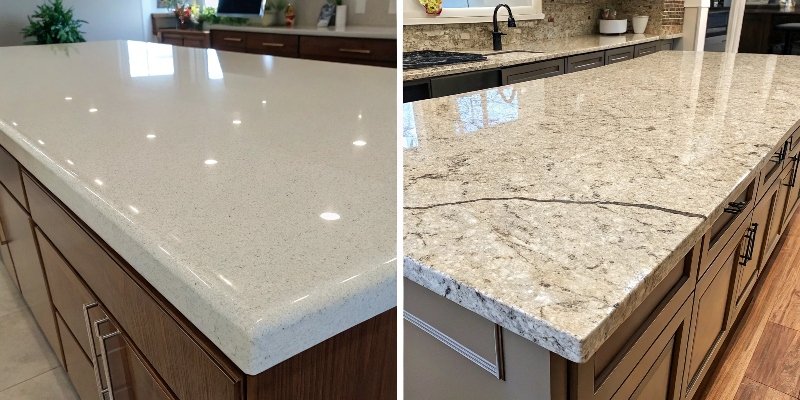
This is one of the most common questions I get from procurement managers like yourself. Both are excellent choices, but they serve different priorities. The best material depends entirely on the project's requirements and the end customer's lifestyle. I find that breaking it down into a simple comparison helps my clients make the right decision for their specific needs.
Here is a table to help you compare them directly:
| Feature | Quartz | Granite |
|---|---|---|
| Maintenance | Non-porous. Never needs sealing. Easy to clean. | Porous. Requires regular sealing to prevent stains. |
| Durability | Highly durable and scratch-resistant. More flexible. | Very durable, but can chip or crack. |
| Appearance | Engineered for consistent color and pattern. Wide variety. | 100% natural stone. Each slab is completely unique. |
| Heat Resistance | Can be damaged by extreme heat. Use trivets. | Highly resistant to heat. Hot pans are usually fine. |
| Stain Resistance | Excellent. The non-porous surface resists stains. | Good, but only if sealed properly. Can stain if not. |
| Cost | Mid-to-high range, depending on the brand and design. | Wide price range, from affordable to very expensive. |
For a client that wants zero maintenance and a uniform look, quartz is the clear winner. For someone who loves the unique, natural patterns of stone and doesn't mind yearly sealing, granite is a fantastic option.
Conclusion
Quartz countertops are a high-tech blend of nature and engineering. Understanding the process and materials ensures you choose a durable, beautiful surface that offers lasting value for any project.
-
Discover the role of polymer resins in quartz countertops and their impact on durability and performance. ↩
-
Understand the vibro-compression process and its significance in creating high-quality quartz slabs. ↩ ↩
-
Discover how industrial mixers contribute to the consistency and quality of quartz countertops. ↩



